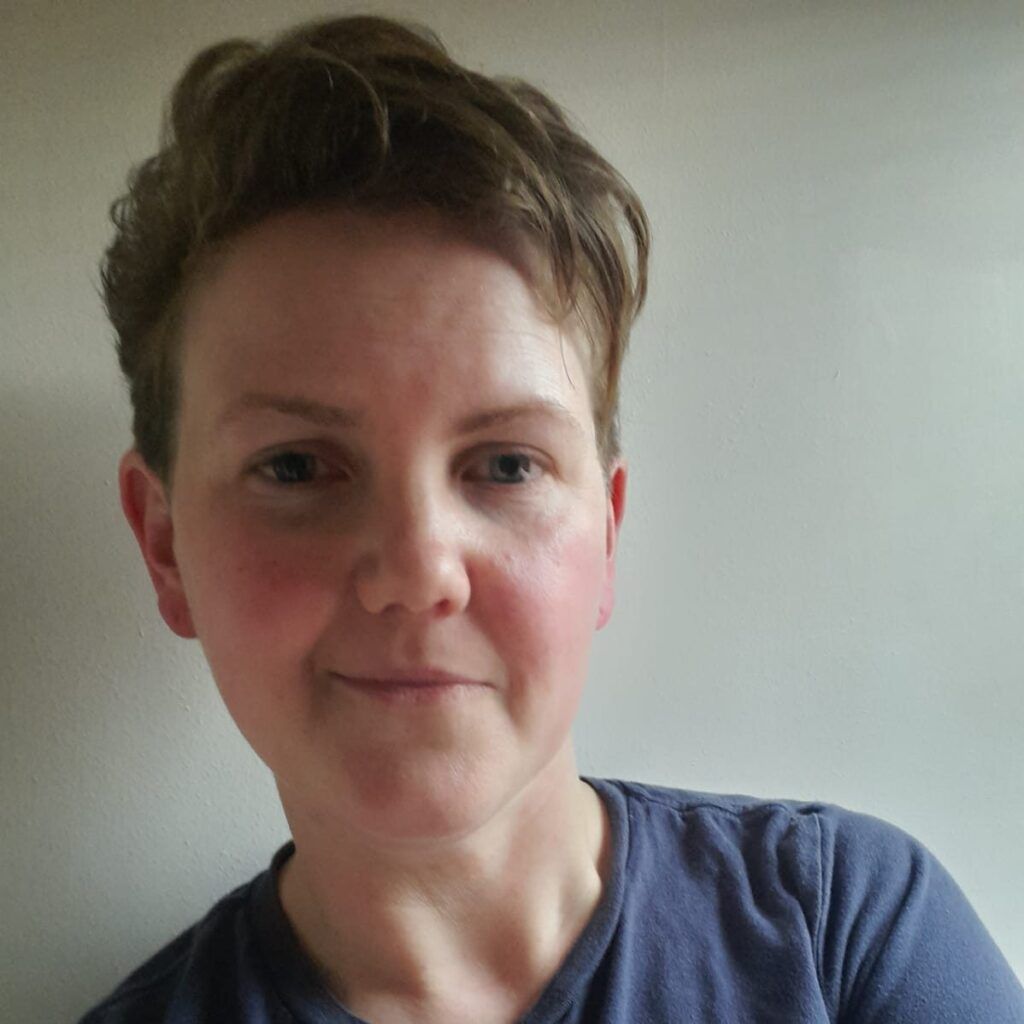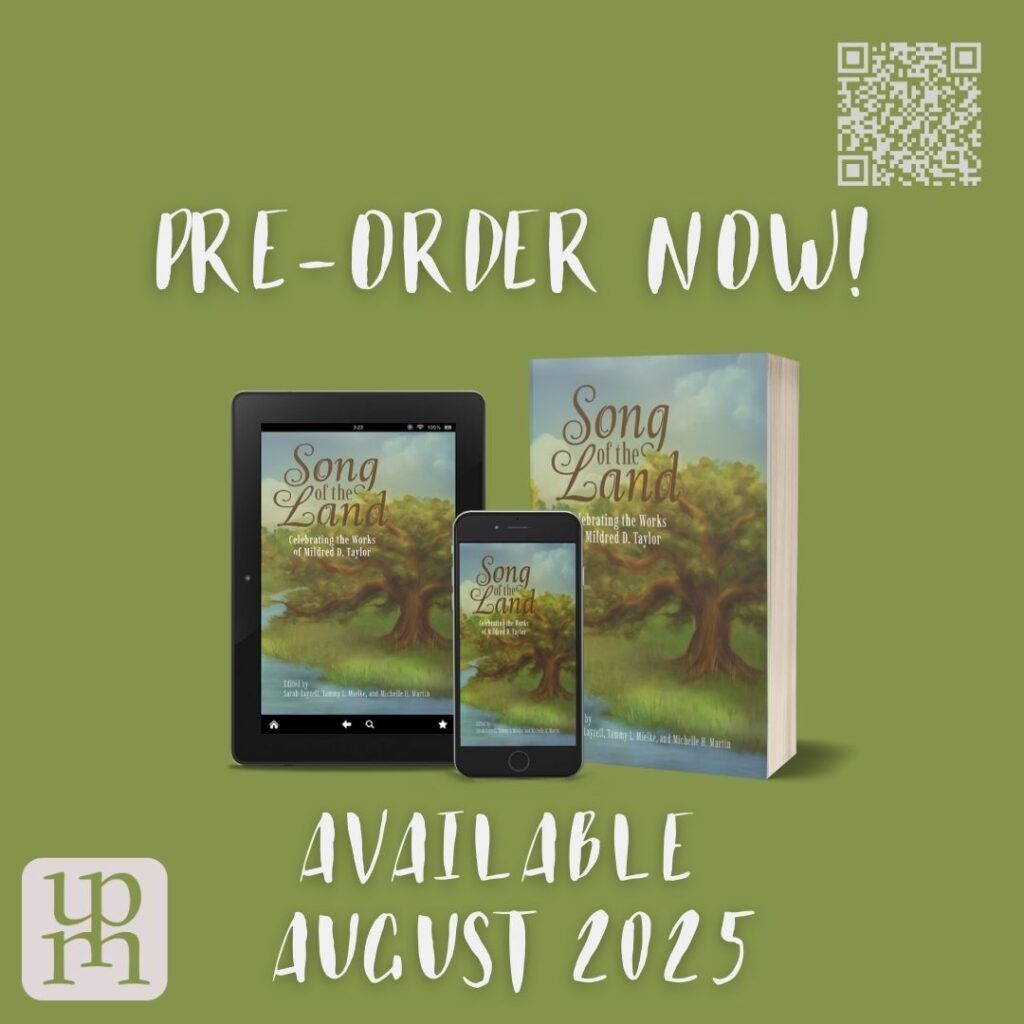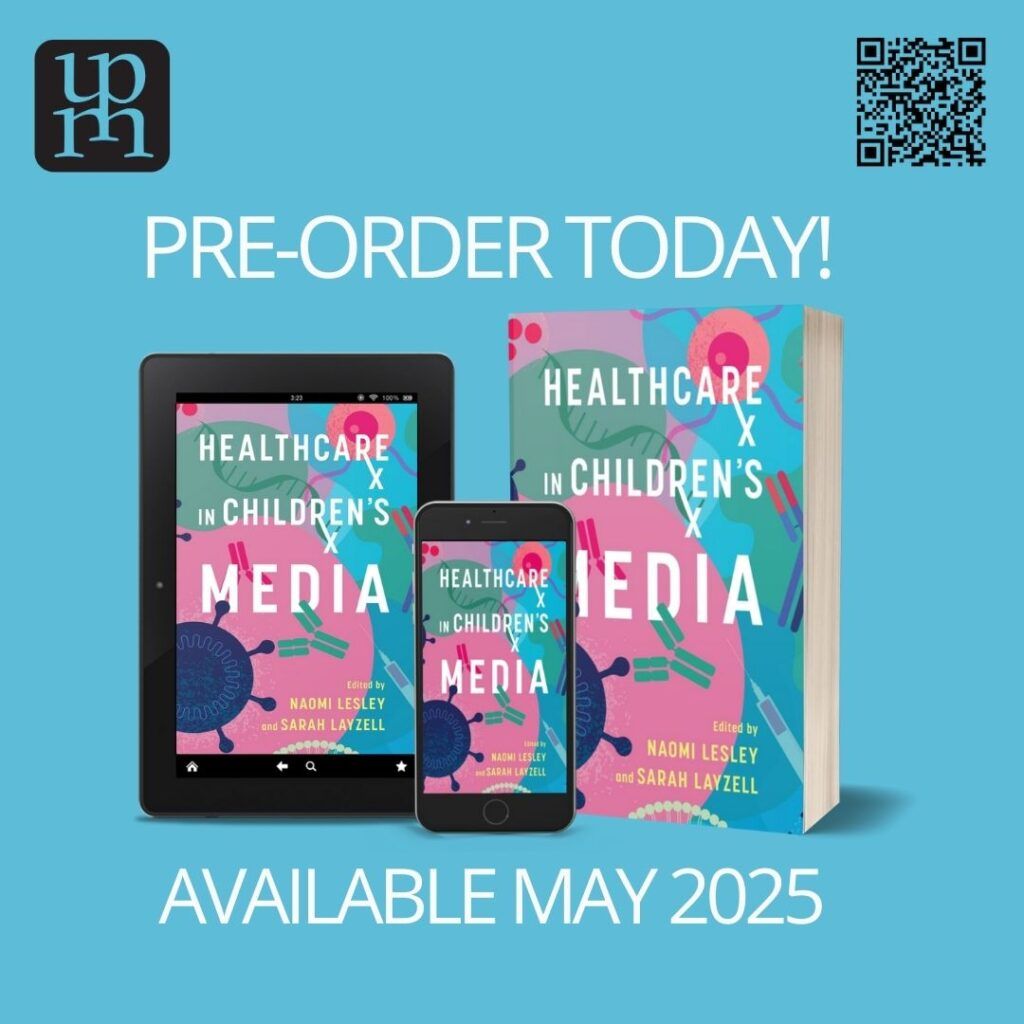Terri is co-founder, creator, and editor of The Hyacinth Review.…
We had the pleasure of sharing SF (Sarah) Layzell’s short story, The Seventh Swan, during our first ever open call. Now, we’re pleased to announce that they’ve published their debut novel, Cottonopolis, an enchanting LGBTQ+ historical fiction.
Sarah Layzell’s work focuses on childhood, queerness and grief. Originally from Lancashire in the north west of England, Sarah now lives near Cambridge. They enjoy playing football, going on train journeys, rambling in the Fens, and looking at the stars.
Sarah’s debut novel for readers aged 8+, Cottonopolis, was published by Northodox Press in 2024. They are also an editor of two collections from University of Mississippi Press: Healthcare in Children’s Media and Song of the Land: Celebrating the Works of Mildred D. Taylor.
Sarah was kind enough to share their experiences with the writing and publishing process, as well as some advice for fellow creatives.
- Learn about Cottonopolis here.
- Pre-order Song of the Land here.
- Pre-order Healthcare in Children’s Media here.
Enjoy!

Your debut novel, Cottonopolis, is an historical YA set in 1840’s Manchester, specifically in Little Ireland. I found it particularly immersive, and I appreciate the sensitivity in which you approached difficult subject matter while also avoiding a tone of condescension to young readers. What was your research process like?
Thank you! I used to work with young people and it’s always important to be honest about difficult subjects and respect the different starting points and awareness a reader might have.
My research process involved reading a lot of history of the area, as well as fiction and art set in Manchester that moved me, like Mary Barton by Elizabeth Gaskell, Passing Time by Michael Butor, the art of Adolphe Valette and LS Lowry. I visited sites like the Manchester Museum of Science and Industry, where you can see old textile machinery in working condition, along with machines such as the Jacquard Loom which played a crucial role in the history of computing.
What inspired you to write about this particular time and place? Do you remember a specific moment that inspired the story of Nellie and Chloe?
I remember standing in the library when I was around 15, a public library in Lancashire, and pulling a book from the shelves. It was Friedrich Engels’ book The Condition of the Working Class in England, which includes a description of what life was like in Little Ireland. The book’s language is powerful but also dehumanising in many ways, and I felt an urge to counter that. Nellie and Chloe’s story started there.
There were lots of things that kept that spark burning: encountering the colonialism and racist and anti-racist attitudes that are part of our local past and present; talking to my grandparents about their family history; growing up as a queer child in a time and place where it would have been illegal for that same public library to give me a book that would have reflected my identity.
Going back further, what inspired you to become a writer?
I found it difficult to talk to people, like Danny (Nellie’s brother and my real brother), but I could write pages and pages. I remember writing a story at school – I think it was about a girl preparing to escape France in the 1940s – and my teacher telling me I could do it professionally.
I’m sure many of our readers are curious, being writers themselves – what was the publishing process like for you? Were there any unexpected challenges that you faced?
I started writing to literary agents and didn’t have any success, partly because the novel was not considered commercial enough. Then I saw an open call from Northodox Press, a small fiction publisher that specialises in storytelling from the North of England. When they requested the full manuscript, I was on a train between London and Brighton, the sun was shining, and my heart started pounding. Everything felt right.
One expected challenge was the pace of publishing. Everything is very slow until suddenly it’s very fast. The book becomes a product that other people are making decisions about. So it’s really important to work with people who respect you and your work, and who you respect in turn. I love what Northodox are trying to build and their authors all support one another.
One of the unexpected challenges is the promotional side of publishing. Promoting just one book could be a full-time job, and sometimes it can feel like I’m being self-indulgent or annoying.
Do you have any advice for writers entering the world of publishing for the first time?
Look for formal mentoring opportunities. Cottonopolis was accepted on to the WriteMentor Summer Programme in 2021 and I was mentored by children’s author Emily Kenny. My calls with Emily were one of the bright spots of that long difficult year. She helped me through the process of rewriting the manuscript and putting together a cover letter that I could use to approach agents and publishers. WriteMentor is also a great community for writers to be part of.
Listening to others and being able to receive feedback is vital. I was fortunate to have several thoughtful readers before the book was published, including sensitivity reader Helen Gould, whose work I highly recommend.
You’re an academic writer and editor – how do you balance various work and projects in your day to day?
To be frank, I don’t have the concentration for academic writing anymore. Maybe it’s some kind of long Covid or maybe it’s shaped by my politics and emotions. I’m more motivated to put my energy into collaborative projects, and projects where I can connect with a broader audience.
So the motivation has to be there and that’s part of the balance for me. I love editing essays, pulling together a cloth woven out of many voices. I’m a co-editor on two essay collections being published this year, one on the theme of healthcare in media and fiction for children, and one on the work of Mildred D. Taylor, one of the most celebrated Black American writers for children.
In terms of balance, my day job comes first to pay the bills, and everything else develops over a much longer time period. I remember reading Susan Cain’s book Quiet and wanting to write a book about doing things slowly. It’s still just an idea, which gives you a sense of how long I need to percolate. Cottonopolis is 120 pages long and I started it over ten years ago. And I still find sentences I’d like to rephrase…
As creatives we draw inspiration from so many sources – what would you say are your greatest sources of creative inspiration?
One of my greatest sources of inspiration is setting. With Cottonopolis, I lived near Manchester for many years and got to know the setting at ground level. You can trace Nellie and Chloe’s steps through the streets. While Manchester has changed over the years, its historical heritage is visible everywhere. There is a spot not far from Pomona Island, the setting for the circus at the end of the novel, where you can stand in the ruins of a Roman-era granary looking up at a Victorian steel viaduct with modern glass skyscrapers rising up behind it. It’s magnificent to me.
I’m currently working on a new novel which uses my current home as its setting. It’s the story of two brothers faced with environmental destruction. The novel is set in the 1600s and is loosely based on the history of the draining of the Fens in the East of England, which is nowadays considered to be an ecological disaster. An early version of one of the chapters was published by the Hyacinth Review!
It’s a Hyacinth Review tradition to ask: which books would you consider to be your top 5 favorites, at least for the moment?
At least for the moment, these are the books that came to mind. Firstly, three young adult books that all have a focus on setting, voice, and not talking down to young people about the issues that affect their lives: Danielle Jawando’s And the Stars Were Burning Brightly, Aidan Chambers’s Postcard from No-Man’s Land, and Mildred D. Taylor’s The Road to Memphis.
Secondly, two grown-up books that I love: Naoise Dolan’s novel Exciting Times, and Letters from Tove, collected letters written by Tove Jansson, queer icon and creator of the Moomins.
Finally, what media/music/miscellany have you been loving lately?
My girlfriend and I have just started a rewatch of The West Wing and so far I have spent an inordinate amount of time shouting at the television. It’s a complicated sort of love.
- Learn about Cottonopolis here.
- Pre-order Song of the Land here.
- Pre-order Healthcare in Children’s Media here.


Terri is co-founder, creator, and editor of The Hyacinth Review. Currently based in Paris, she works as a writer and freelance web designer. Her work has been published in a variety of publications including NME Magazine, Kanilehua Art & Literary Magazine, Hohonu Academic Journal, and The Euhemerist. Terri holds a B.A in English from the University of Hawai'i at Hilo, and spends her time exploring the arts & humanities.









